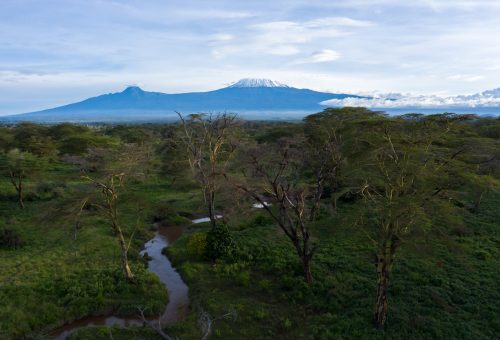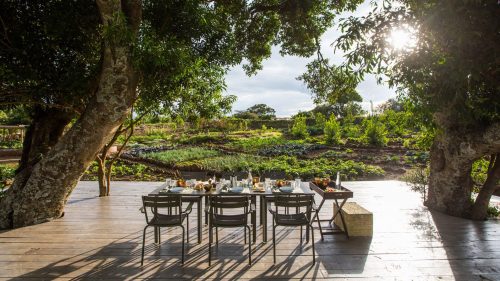
There are moments when nature just takes your breath away. Limited occasions, truly jaw-dropping spectacles. I remember most of mine clearly. In 2005, I was backpacking across Latin America and came across the red and green lakes of Laguna Colorado and Laguna Verde in Bolivia. Startling sights. Volcano backdrops. Incredible, vivid colours. Unspoilt, raw nature. Something from another planet. Or maybe just our own planet showing her true self?
For many of our guests at Angama Mara, they feel something similar the first time they step onto the deck at North or South Camp. A jaw-dropping view. The open expanse of the Maasai Mara spread out in front of them, gentle and peaceful but with just a hint of the dangers of the wild lurking beneath the surface. I fondly recall my grandmother’s reaction when she first took in the view soon after we opened: “I never knew places like this still existed,” she muttered, as she struggled to hold back tears. Needless to say, she wasn’t the only one.


I had a similar moment in January, and it was one that I wasn't entirely prepared for. We had arrived in the Greater Amboseli ecosystem on a cloudy afternoon, on a scouting trip of sorts if you will, and as we headed out the next morning in search of the area’s famous super-tuskers – elephants whose tusks weigh more than 100lbs each – a dense fog ensured visibility of no more than five metres. And so we bumbled gently across the savannah, taking in a breeding herd of buffalo, innumerable warthogs, healthy populations of antelope, and occasionally stopping to listen to the birdsong, or admire the natural beauty of the fever tree forests.
Unwittingly, as we turned a corner Nicky shouted “Kibo!”, startling all of us and bringing the vehicle to a halt. And there she stood in all her glory – Mount Kilimanjaro – the world’s tallest free-standing mountain presiding gloriously over us. It was so sudden. The instantly recognisable snowcapped peak, so obvious. So close. So majestic. I was lost for words. And as the morning sunlight burnt off the fog, the image became ever clearer, embedding itself in my memory forever. I wanted to stay. To pull out a red rocking chair and just sit there – as if it was my porch – and marvel at the beauty of nature, and the glory of Kilimanjaro.

Over the next few days, she followed us wherever we went, always watching. From every angle. And so too I watched her in return – in complete and utter awe. It was a bit sad really, looking over my shoulder at every turn in search of Kibo. But it wasn’t lost on me that perhaps I wasn’t the only one afflicted with such affection, as Jeremy Goss remarked “I’ve been here seven years, and I’m still taking the same pictures.”


Like me, you may have read Shannon Davis’s recent account of the arduous feat of climbing Kili, and decided, thanks but that’s not something I aspire to. And whilst it is located just over the border in Tanzania, the best views are unquestionably to be found on the Kenyan side, in and near Amboseli National Park. Sitting on a deck chair, it's hard to contemplate why someone would feel the need to summit it, the real attraction must surely be to just to sit and gaze in awe and wonder. Nothing prepared me for seeing it in person, and already I’m preparing a return, perhaps even with my (now 94-year old) Gran. Now wouldn’t that make for a story.
With thanks to Jeremy Goss from Big Life Foundation for the incredible images. Big Life partners with local communities to protect nature for the benefit of all and has been tremendously successful in the Greater Amboseli ecosystem despite various conservation challenges such as poaching, human-wildlife conflict and agriculture encroachment.
Filed under: Stories from Amboseli
Subscribe for Weekly Stories
Comments (0):

The Angama Shamba